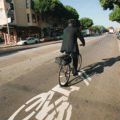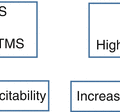© Springer International Publishing AG 2018
Stefano Masiero and Ugo Carraro (eds.)Rehabilitation Medicine for Elderly PatientsPractical Issues in Geriatricshttps://doi.org/10.1007/978-3-319-57406-6_3434. Cognitive Rehabilitation Therapy for Neurologic Diseases
(1)
Rehabilitation Unit, Department of Neuroscience, University of Padua, Padua, Italy
(2)
I.R.C.C.S. San Camillo Hospital, Venice, Italy
Cognitive rehabilitation therapy (CRT) is the multisensory goal-oriented programme of relearning or compensating for cognitive skills and abilities that have been altered or lost after brain damage. In particular, CRT is focused on improving cognitive functions (memory, attention and concentration) and daily living skills (i.e. using the telephone, managing medication and handling money). Cognitive impairments can indeed strongly interfere with safety, productivity, independence and personal relationships and, more generally, with the human global functioning.
Cognitive rehabilitation was born in the twentieth century and developed by physicians, scientists and health professionals to manage the acquired disability of thousands of head-injured veterans coming back from the world wars [1]. In the last decades, the high long-term impact of acquired brain injury (ABI), particularly traumatic brain injury (TBI), has been recognized, and CRT programmes have become more and more accurate.
If at the beginning the CRT seemed to be focused exclusively on training the cognitive skills and processes, nowadays the emphasis shifted on producing and obtaining functional changes.
34.1 Principles of Cognitive Rehabilitation Therapy
The main principle of CRT is brain plasticity which refers to a peculiar capacity of the brain of changing its neural network organization and functioning, producing new synapses (sprouting) or removing (pruning) the older ones. Indeed, acting on brain plasticity with a structured environmental experience will definitively change the brain functionality and reorganization as well as the subject behaviour [2]. This consideration should be joined to the assumption of modularity of the cognitive processes, according to which the brain is organized into subcomponents relatively independent specialized to perform specific functions. If a damaged cognitive module retains part of the neural substrate, then it is possible, through appropriate stimulation, to obtain the reacquisition of the cognitive process. Otherwise, cognitive rehabilitation should help the patient to develop compensatory mechanisms, taking advantage of the brain’s ability to perform complex tasks using alternative cognitive processes [3].
Overall, the approach of CRT is focused on reducing disability. It aims to enhance functioning and independence in patients with cognitive deficits due to a neurological condition aiming to lessen impairments, to restore the lost cognitive functions and to reduce the disabling impact of such cognitive deficits [4]. The rehabilitation programme is developed according to each subject’s specific need. CRT follows a process of identifying areas of impairment, facilitating compensatory mechanisms to rapidly improve some functions and challenging the brain to restore them.
34.2 Hierarchy of Cognitive Processes
A stimulation of a cognitive function can also lead to a dysfunctional plasticity. Sturm et al. (1997) have shown that subjects receiving a stimulation of basic attentional function compared to those who received higher attentional processes training had a better outcome; moreover the second ones showed a decline of their cognitive skills [5].
Cognitive functions are modular and hierarchically organized, and basic processes serve higher functions allowing the brain to complete complex tasks. Treating each function as independent could cause huge mistakes.
Since the aim of CRT is to reduce the disability derived from cognitive impairments, the rehabilitation programme should be designed to take into account such issues. It is fundamental to provide rehabilitation tasks sticking to a hierarchical framework of cognitive functions, whereby lower-level cognitive skills (e.g. sustained attention) are involved and stabilized before proceeding with treatment of higher level cognitive domains (e.g. executive functions).
34.3 Bottom-Up and Top-Down Processes in CRT
Among the techniques and the approaches of CRT, a distinction has been proposed by Robertson and Murre [6] who describe two ways of how a CRT programme could be designed: the “bottom-up” versus “top-down” approaches.
The bottom-up process can be described as “retraining the brain from the bottom up”. This approach is based on providing the injured network with strong external perceptual, motor or sensory stimuli which produce a readaptation of perceptive processes influencing the recovery of the impaired cognitive function.
Examples of this kind of approach can be found in those treatments focused on motor recovery, where the high number of repetitions of specific movements (e.g. fine movements of the fingers) produces a significant improvement of the targeted area motor function. The repetition induces plasticity and adaptation, by means of synaptic growth, of neurons around the damaged area of the brain.
This approach is also commonly adopted for rehabilitation of spatial neglect with prism adaptation stimulation technique. It consists of displacing the visual field of the subject rightward using specific prismatic lenses, and then the subject is asked to perform a repetitive motor task (reaching an object in front of him). In order to compensate this shift, the subject has to perform the movement toward the opposite side (left), resulting in a leftward displacement of sensorimotor coordinates.
Stay updated, free articles. Join our Telegram channel

Full access? Get Clinical Tree





